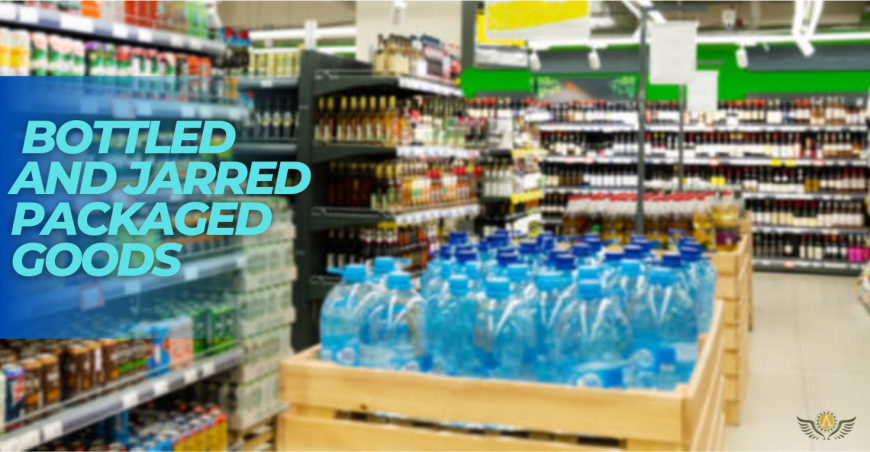What Are Bottled and Jarred Packaged Goods
Bottled and jarred packaged goods are food and other products that are sold in containers made of glass, plastic, or metal, such as bottles or jars. These products are often shelf-stable and can be stored for long periods of time without spoiling. Examples of bottled and jarred packaged goods include condiments, sauces, pickles, jams, honey, olives, and cooking oils. They may also include non-food items, such as cleaning products, personal care products, and health and beauty products.

Bottled and jarred packaged goods are convenient for consumers because they are easy to store and transport, and they do not require refrigeration. They are also easy to open and use, and they can be resealed to keep the product fresh. These types of packaged goods are typically found in supermarkets and other retail outlets, and they are often sold in bulk quantities to save money.
What are packaged goods?
Packaged goods are products that are packaged in some form of container or wrapping for the purpose of protection, preservation, convenience, or marketing. Package goods can include a wide range of products, such as food, beverages, personal care products, household goods, and industrial products.
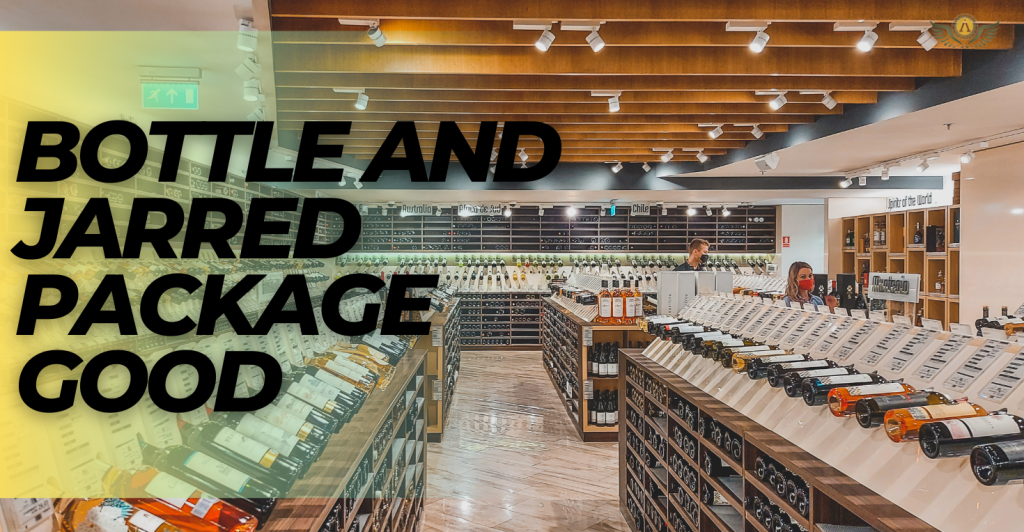
Goods can be sold in a variety of forms, including bottles, jars, cans, boxes, bags, and pouches. The packaging materials used for packaged goods can include glass, plastic, metal, paper, cardboard, and composite materials.
The packaging of a product serves several key functions, including protection, convenience, marketing, safety, and compliance with legal requirements. Packaging can also impact the sustainability of a product, as it can be designed to minimize waste and environmental impact.
Some Reasons Jarred & Bottled Packaged Goods
For example, if you want to start a business selling bottled goods for your health food store, you need to choose the right packaging for your products. If you don’t have this you won’t be able to get the results you want and if you do you will have to pay more for your products. In this article, we learn about the pros and cons of bottled and packaged goods. Keeping these things in mind will help you create a good business plan for your startup.
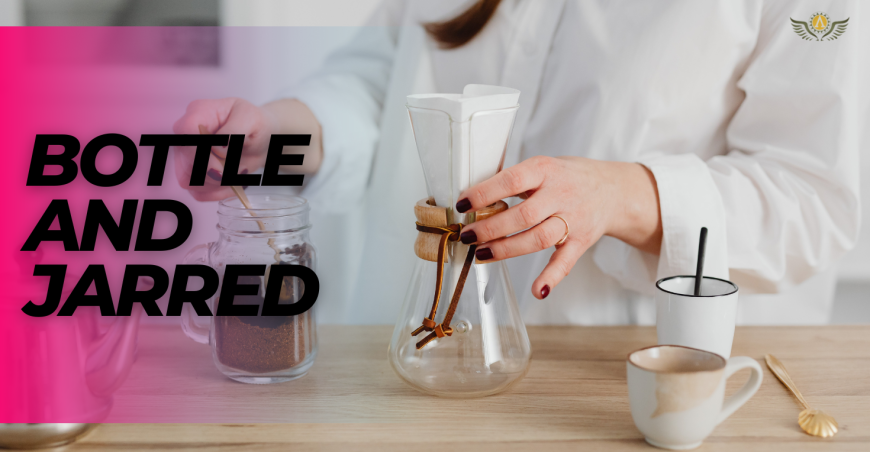
There are several reasons why jarred and bottled packaged goods are popular among consumers:
- Convenience: Jarred and bottled packaged goods are convenient for consumers because they are easy to store and transport, and they do not require refrigeration. They are also easy to open and use, and they can be resealed to keep the product fresh.
- Shelf stability: Many jarred and bottled packaged goods are shelf-stable, which means they can be stored for long periods of time without spoiling. This makes them a convenient option for pantry staples and emergency supplies.
- Long shelf life: Many jarred and bottled packaged goods have a long shelf life, which means they can be stored for several months or even years without spoiling. This makes them a good option for stockpiling and long-term storage.
- Versatility: Jarred and bottled packaged goods can be used in a variety of ways, such as cooking ingredients, condiments, and toppings. They can also be used for cleaning, personal care, and other non-food purposes.
- Affordability: Jarred and bottled packaged goods are often sold in bulk quantities, which can save money for consumers. They are also often available at a lower price point than fresh or perishable products.
Why do people prefer packaged goods in jars and bottles?
There are several reasons why people may prefer packaged goods in jars and bottles:
- Convenience: Packaged goods in jars and bottles are convenient for consumers because they are easy to store and transport, and they do not require refrigeration. They are also easy to open and use, and they can be resealed to keep the product fresh.
- Shelf stability: Many packaged goods in jars and bottles are shelf-stable, which means they can be stored for long periods of time without spoiling. This makes them a convenient option for pantry staples and emergency supplies.
- Long shelf life: Many packaged goods in jars and bottles have a long shelf life, which means they can be stored for several months or even years without spoiling. This makes them a good option for stockpiling and long-term storage.
- Versatility: Packaged goods in jars and bottles can be used in a variety of ways, such as cooking ingredients, condiments, and toppings. They can also be used for cleaning, personal care, and other non-food purposes.
- Affordability: Packaged goods in jars and bottles are often sold in bulk quantities, which can save money for consumers. They are also often available at a lower price point than fresh or perishable products.
Advantages of bottled and jarred packaged goods:
Bottled products are generally more expensive than bottled products. However, there are some brands that offer goods packaged in premium bottles, which are more expensive than jarred products.
Bottle: Bottle is a kind of packaging widely used by people. It is not only cheap, but also easy to work with. In addition, the shape of the bottle packaging is very beautiful and perfect. It is easy to carry and transport. However, the weight of the product is relatively heavy, the packaging is relatively large, and the transportation cost is relatively high.
Jarred: Jarred is a type of packaging commonly used in the food industry. It’s cheaper than the bottle. Recycling is easy.
There are several advantages to using bottled and jarred packaged goods:
- Convenience: Bottled and jarred packaged goods are convenient for consumers because they are easy to store and transport, and they do not require refrigeration. They are also easy to open and use, and they can be resealed to keep the product fresh.
- Shelf stability: Many bottled and jarred packaged goods are shelf-stable, which means they can be stored for long periods of time without spoiling. This makes them a convenient option for pantry staples and emergency supplies.
- Long shelf life: Many bottled and jarred packaged goods have a long shelf life, which means they can be stored for several months or even years without spoiling. This makes them a good option for stockpiling and long-term storage.
- Versatility: Bottled and jarred packaged goods can be used in a variety of ways, such as cooking ingredients, condiments, and toppings. They can also be used for cleaning, personal care, and other non-food purposes.
- Affordability: Bottled and jarred packaged goods are often sold in bulk quantities, which can save money for consumers. They are also often available at a lower price point than fresh or perishable products.
- Safety: Bottled and jarred packaged goods are typically sealed to protect the product from contamination, which helps to ensure safety and quality.
- Sustainability: Many bottled and jarred packaged goods are made from recycled materials or are recyclable, which can help to reduce waste and reduce the environmental impact of packaging.
Disadvantages of bottled and jarred packaged goods:
Packaged goods in bottles or jars has been a trend in the market for years. The market has gone through a transition from traditional packaging to a new packaging that is practical and beautiful. This packaging provides consumers with easy access to the contents of the package while providing protection from external elements. But despite the many advantages of bottle and glassware, they also have reasons to make this switch. What are the disadvantages of bottle and glass packaging? Bottle and glass packaging is not for everyone.
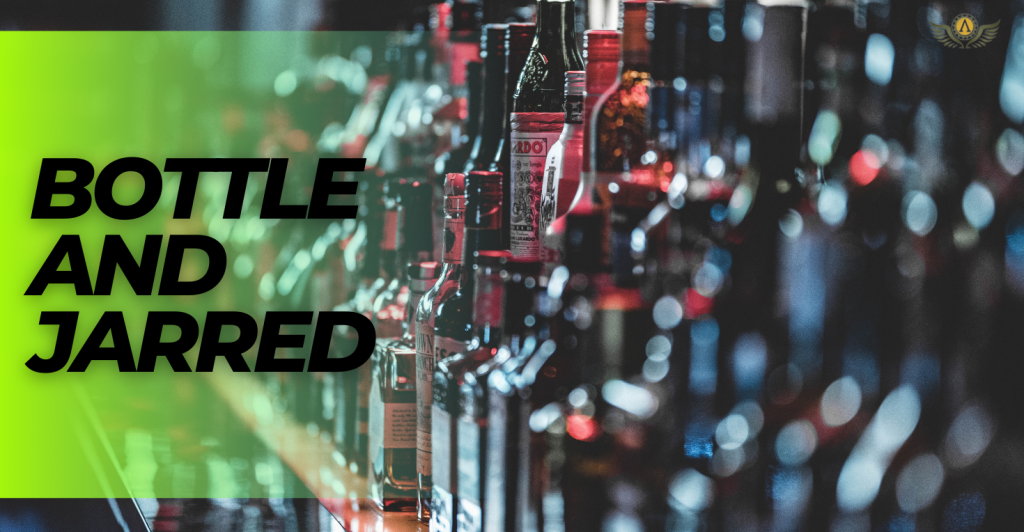
There are certain groups of people who use packaged goods and others who do not. For example, children under the age of 3 and the elderly do not use bottle or glassware because they are difficult to open. The elderly also have difficulty opening these packages, especially those with tight lids. These packages are also not suitable for people with limited manual dexterity. This variety of designs makes it difficult to store in different cabinets as they are not uniform.
There are several disadvantages to using bottled and jarred packaged goods:
- Waste: The production and disposal of bottled and jarred packaged goods generates a significant amount of waste, as the containers are often not recycled or reused. This can contribute to litter and pollution, and it can put a strain on natural resources.
- Cost: Bottled and jarred packaged goods can be more expensive than fresh or bulk products, as they often include the cost of packaging and transportation.
- Quality: Some bottled and jarred packaged goods may not be as fresh or of the same quality as fresh products, as they may have been processed or preserved to extend their shelf life.
- Nutritional value: Some bottled and jarred packaged goods may contain added sugars, salt, and other additives to improve flavor and extend shelf life, which can impact their nutritional value.
- Environmental impact: The production of bottled and jarred packaged goods can have a negative impact on the environment, as it requires energy and resources to extract, transport, and process the raw materials and packaging materials.
- Health concerns: Some bottled and jarred packaged goods, such as certain types of plastics and metal cans, may contain chemicals that can leach into the product and pose potential health risks.
Plastic & Glass Bottle
Food and beverages are widely packaged in plastic and glass containers due to their convenience and durability. They are often used to store food and drinks. There are some similarities between glass and plastic bottles, but the main difference is that glass bottles are usually transparent while plastic bottles are opaque.
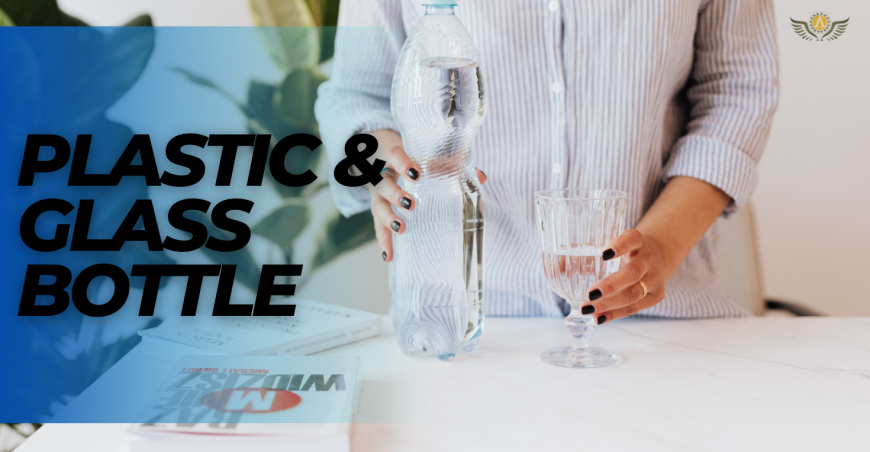
Plastic bottles:
- Plastic bottles are made from a variety of materials, such as polyethylene terephthalate (PET), high-density polyethylene (HDPE), and polypropylene (PP).
- Plastic bottles are lightweight, shatter-resistant, and flexible, which makes them easy to handle and transport.
- Plastic bottles are also relatively inexpensive to produce, which makes them a cost-effective packaging option for many products.
- Plastic bottles are typically used for products that do not require a high level of barrier protection, such as water, soda, and other beverages.
- Plastic bottles can be recycled, but they often end up in landfills or the environment due to inadequate recycling infrastructure and consumer habits.
Glass bottles:
- Glass bottles are made from silica sand, soda ash, and limestone, which are melted together to form the bottle.
- Glass bottles are strong, durable, and resistant to chemical reactions, which makes them a good packaging option for acidic or high-pH products.
- Glass bottles are also airtight and impermeable, which makes them suitable for products that are sensitive to oxygen or other gases.
- Glass bottles are typically used for products that require a high level of barrier protection, such as sauces, pickles, and other condiments.
- Glass bottles can be recycled indefinitely, but they are heavier and more fragile than plastic bottles, which can make them more expensive to transport and handle.
Glass Jar or Plastic Bottles – Which is Better?
It is difficult to say definitively which is better between glass jars and plastic bottles, as it ultimately depends on the specific application and the needs of the product. Both types of packaging have their own unique characteristics and benefits, and they are often used for different types of products.
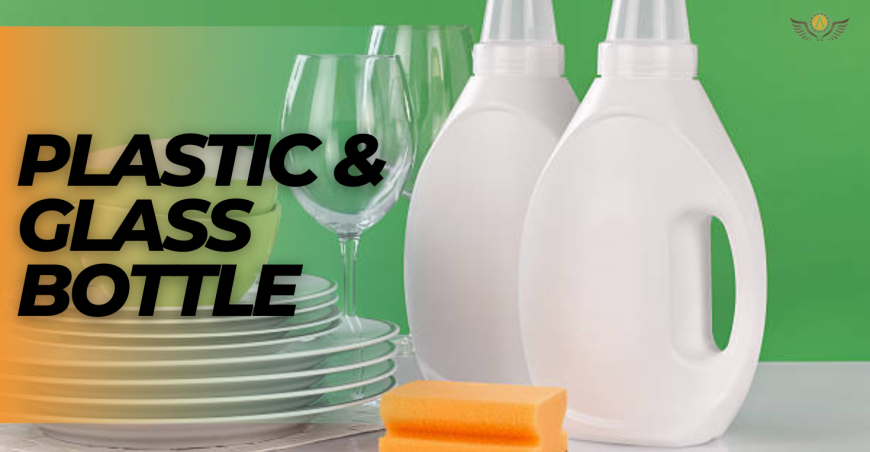
Here are some factors to consider when deciding between glass jars and plastic bottles:
- Product type: Glass jars are typically used for products that require a high level of barrier protection, such as sauces, pickles, and other condiments, while plastic bottles are often used for products that do not require as much protection, such as water, soda, and other beverages.
- Shelf life: Glass jars are generally better at preserving the quality and shelf life of products, as they are airtight and impermeable, and they do not interact with the product. Plastic bottles may allow some air or gases to pass through, which can affect the shelf life of the product.
- Safety: Glass jars are generally considered to be safer and more inert than plastic bottles, as they do not contain chemicals that can leach into the product. However, plastic bottles made from certain types of plastics, such as PET and HDPE, are considered to be safe for food and beverage products.
- Recycling: Both glass jars and plastic bottles can be recycled, but glass jars can be recycled indefinitely, while plastic bottles may degrade over time and are often not recycled due to inadequate recycling infrastructure and consumer habits.
Better For Consumer Protection in Glass jar or plastic bottles

Both glass jars and plastic bottles can provide consumer protection, depending on the specific product and packaging needs. Here are some factors to consider when deciding which is better for consumer protection:
- Product type: Glass jars are generally better at preserving the quality and shelf life of products, as they are airtight and impermeable, and they do not interact with the product. This can help to protect the consumer from spoilage or contamination. Plastic bottles may allow some air or gases to pass through, which can affect the shelf life of the product.
- Product protection: Glass jars are more resistant to impact and damage, which can help to protect the product from damage during transportation and handling. Plastic bottles are more flexible and lightweight, which can make them easier to handle, but they may be more prone to damage.
Ultimately, the best packaging material for consumer protection will depend on the specific needs of the product, including the type of product, the desired shelf life, and the required level of protection.
Long Time Guarantee | Glass jar or plastic bottles
Both glass jars and plastic bottles can provide a long shelf life for products, depending on the specific product and packaging needs. Here are some factors to consider when deciding which is better for a long shelf life:

- Product type: Glass jars are generally better at preserving the quality and shelf life of products, as they are airtight and impermeable, and they do not interact with the product. This can help to extend the shelf life of the product. Plastic bottles may allow some air or gases to pass through, which can affect the shelf life of the product.
- Shelf stability: Some products are naturally shelf-stable and do not require special packaging to extend their shelf life, such as honey and certain types of oils. Other products may require special packaging to extend their shelf life, such as sauces and pickles.
- Product formulation: The formulation of the product itself can impact its shelf life. For example, products that contain preservatives or other additives may have a longer shelf life than products that do not.
- Storage conditions: Proper storage conditions can also help to extend the shelf life of products. It is important to follow the storage instructions on the product label and store the product in a cool, dry place to maximize its shelf life.
Ultimately, the best packaging material for a long shelf life will depend on the specific needs of the product, including the type of product, the desired shelf life, and the required level of protection.
Type of Packing Material
There are many different types of packaging materials that can be used for bottled and jarred packaged goods, including:

- Glass: Glass is a durable and inert material that is resistant to chemical reactions and does not interact with the product.
- Plastic: Plastic is a lightweight, flexible, and inexpensive material that is used for a wide variety of products. There are many different types of plastics, such as polyethylene terephthalate (PET), high-density polyethylene (HDPE), and polypropylene (PP), each with its own unique characteristics.
- Metal: Metal, such as aluminum and steel, is a strong and durable material that is often used for products that require a high level of barrier protection, such as canned goods and beverages. Metal is resistant to chemical reactions and is impermeable to gases, which can help to extend the shelf life of the product. Metal can be recycled indefinitely, but it is heavy and requires a lot of energy to produce and recycle.
- Paper: Paper is a lightweight and biodegradable material that is often used for products that do not require a high level of barrier protection, such as cereal and snack foods.
Industrial or business view of bottled and jarred packaged good
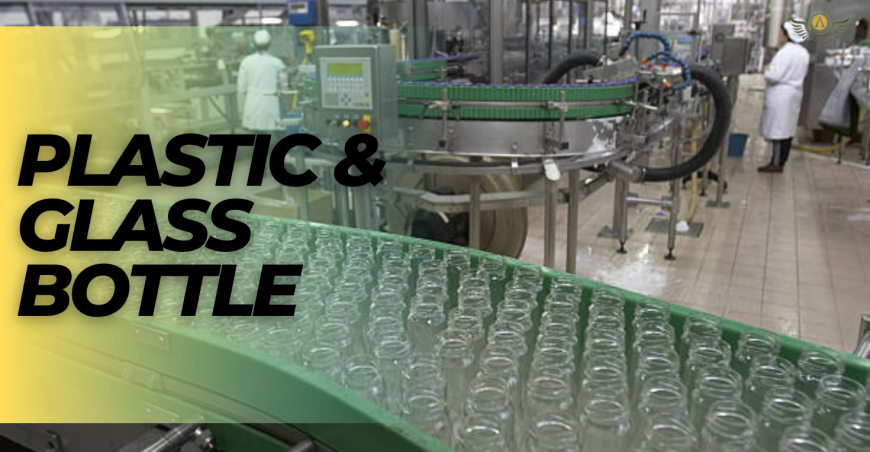
From an industrial or business perspective, bottled and jarred packaged goods offer several advantages:
- Convenience: Bottled and jarred packaged goods are convenient for consumers, which can help to increase sales and customer satisfaction.
- Shelf stability: Many bottled and jarred packaged goods are shelf-stable, which means they can be stored for long periods of time without spoiling. This can help to reduce waste and increase profitability for the business.
- Long shelf life: Many bottled and jarred packaged goods have a long shelf life, which means they can be stored for several months or even years without spoiling. This can help to reduce the risk of product loss and increase profitability for the business.
- Versatility: Bottled and jarred packaged goods can be used in a variety of ways, which can help to increase the potential market for the product.
- Affordability: Bottled and jarred packaged goods are often sold in bulk quantities, which can save money for consumers and increase profitability for the business.
- Safety: Bottled and jarred packaged goods are typically sealed to protect the product from contamination, which helps to ensure safety and quality.
Significance of packaging of goods:
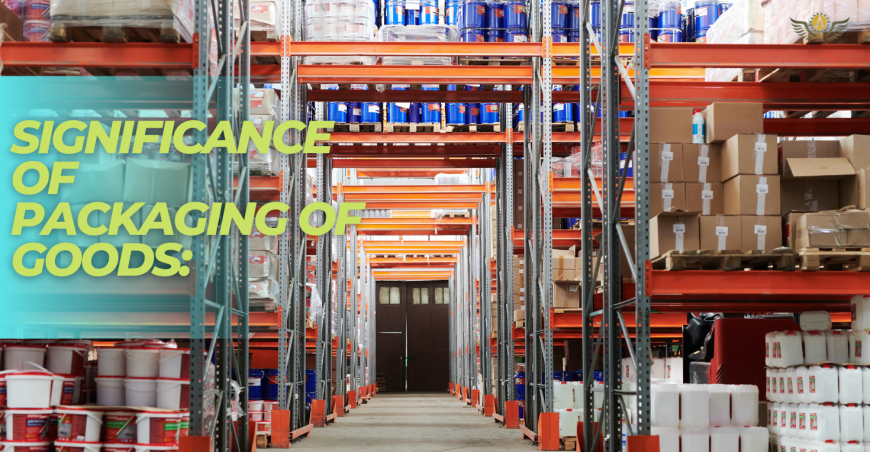
Packaging is an important aspect of the product development process, as it serves several key functions:
- Protection: Packaging helps to protect the product from damage, contamination, and deterioration during transportation, storage, and handling.
- Convenience: Packaging can make the product more convenient to use, store, and transport, which can improve the consumer experience.
- Marketing: Packaging can be used to differentiate the product and communicate its value proposition to consumers. Packaging can also be used to support marketing efforts, such as through branding, labeling, and product positioning.
- Safety: Packaging can help to ensure the safety of the product by providing tamper-evident seals, warning labels, and other safety features.
- Legal requirements: Packaging must comply with relevant laws and regulations, such as labeling requirements and packaging materials regulations.
Overall, packaging plays a crucial role in the success of a product by protecting and promoting the product, and by meeting the needs and expectations of consumers and regulatory authorities.
Avoid purchasing the packaged product with these marks
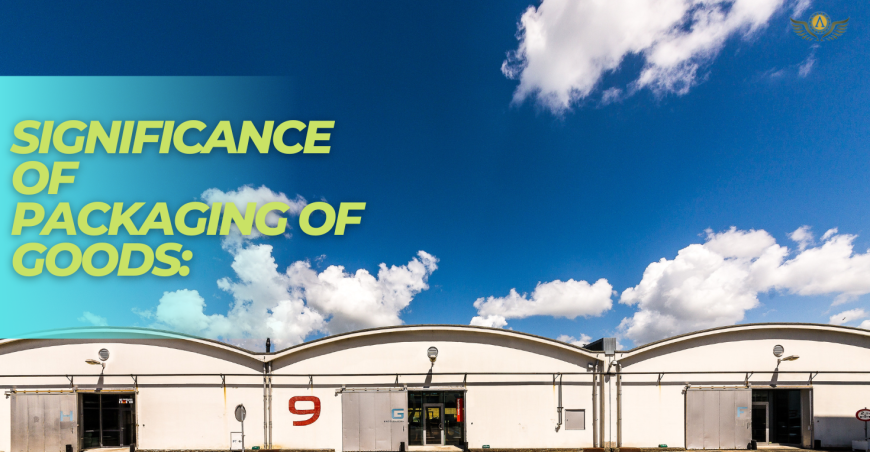
Here are some signs that a packaged product may not be of good quality or may not be safe:
- Expired or outdated product: If the product has expired or is past its recommended use-by date, it may not be safe or of good quality. It is important to check the expiration date on the product before purchasing.
- Foreign objects: If the product contains foreign objects, such as dirt, debris, or insects, it may not be safe or of good quality.
- Unclear or misleading labeling: If the labeling on the product is unclear or misleading, it may be difficult to determine the ingredients, nutritional content, or other important information about the product. It is important to carefully read and understand the labeling before purchasing.
- Off-odor or off-taste: If the product has an unusual or off-odor or off-taste, it may not be safe or of good quality.
It is important to carefully inspect packaged products before purchasing to ensure that they are safe and of good quality. If you have any concerns about the quality or safety of a product, it is best to avoid purchasing it.
Frequently Asked Questions:
[sp_easyaccordion id=”2553″]
Conclusion
Bottled and jarred packaged goods offer several advantages, including convenience, shelf stability, long shelf life, versatility, affordability, and safety. However, they also have some disadvantages, such as waste, cost, potential impact on quality and nutritional value, and environmental impact.
When deciding whether to purchase bottled or jarred packaged goods, it is important to consider the specific needs of the product, including the type of product, the desired shelf life, and the required level of protection. It is also important to consider the sustainability of the packaging material and the impact it may have on the environment.
